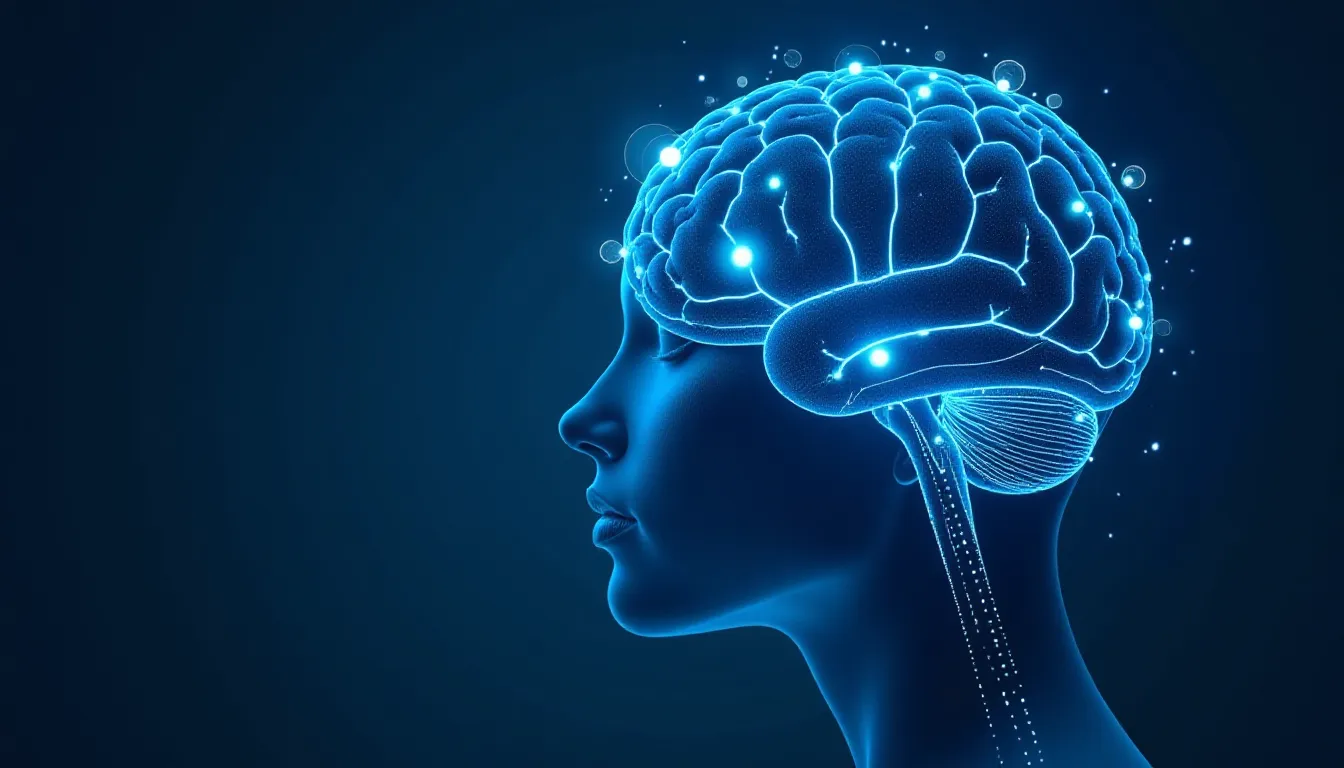Applied Artificial Intelligence transforms entire sectors with innovations in machine learning and deep learning. This article discusses how these technologies are driving automation and data analysis, offering effective and innovative solutions across various fields. Understanding the practical application of these technologies is essential to navigate the digital future.
What is Artificial Intelligence?
Definition and History
Artificial Intelligence (AI) is a field of computer science that seeks to develop systems and machines capable of performing tasks that, until then, were exclusive to human intelligence. These tasks include reasoning, learning, problem-solving, and language comprehension. The concept of AI encompasses a variety of technologies, including complex algorithms, large-scale data processing, and the use of neural networks that mimic the functioning of the human brain.
The history of AI dates back to the 1950s when the first researchers began exploring the possibility of machines that could “think.” In 1956, a pioneering group of scientists, including John McCarthy and Marvin Minsky, organized the Dartmouth Conference, considered the starting point for the formal study of AI. During this event, the foundations for the future development of artificial intelligence were established, including the need to simulate human cognitive functions in computer programs.
In the following decades, AI advancements experienced highs and lows, known as “AI winters,” periods when enthusiasm and investments declined due to lack of practical results. However, these interruptions did not halt progress. Starting in the 1990s, with increased processing power and the availability of large volumes of data, AI began to make significant strides, driven by techniques such as machine learning and deep learning.
These advancements culminated in practical applications that transformed entire sectors, from healthcare to entertainment. For example, the use of AI algorithms in medical diagnostics allows for the analysis of images and patient data with impressive accuracy. Similarly, virtual assistants like Siri and Google Assistant have revolutionized how we interact with devices. As technology advances, AI continues to evolve, opening new possibilities and challenges for the future, paving the way for a discussion on machine learning, which will be addressed next.
Machine Learning: The Foundation of Artificial Intelligence
Machine learning is a subfield of artificial intelligence that focuses on developing algorithms and models that allow computational systems to learn from data and experiences. These algorithms are designed to recognize patterns, make predictions, and improve their performance over time, adapting to new information. Learning is typically classified into three categories: supervised learning, unsupervised learning, and reinforcement learning, each with its specific characteristics and areas of application.
The applications of machine learning are vast and impact various industry sectors. In healthcare, for instance, predictive models are used to diagnose diseases based on medical examinations and patient history. In finance, analytical algorithms help identify fraud in transactions and predict market volatility. In transport, machine learning systems optimize routes and improve logistical efficiency, while customer service solutions employ intelligent chatbots to answer questions and resolve issues autonomously.
The algorithms learn and adapt by analyzing large volumes of data, extracting features and adjusting parameters in response to variable inputs. This not only increases the accuracy of predictions but also allows companies to quickly adapt to market changes. As data collection continues to grow, machine learning becomes increasingly essential for organizational success, creating a continuous desire for innovations and improvements.
Thus, it is clear that the evolution of machine learning paves the way for the next level of artificial intelligence, preparing the ground for a deeper dive into the complexities of deep learning, where deep neural networks are radically transforming how machines understand and interpret complex data.
Deep Learning: The Revolution of Neural Networks
Understanding Deep Learning
Deep learning represents one of the most innovative approaches within the field of artificial intelligence, allowing machines to learn from large amounts of data more efficiently and effectively. Deep neural networks are the backbone of this technology, in contrast to traditional machine learning methods that often rely on manual and simplified features. While machine learning focuses on algorithms that extract patterns from data using a limited set of inputs, deep learning utilizes multidimensional layers of artificial neurons that can capture complex and deep representations of the data.
Advances in deep learning have resulted in significant gains in various applications, especially in computer vision and natural language processing (NLP) scenarios. In the realm of computer vision, technologies such as facial recognition and object detection have immensely benefited from this approach. The use of convolutional networks (CNNs) has enabled precise image identification with performance that often surpasses human capabilities. These innovations have practical applications in security, marketing, and even medicine, where image analysis plays a crucial role in diagnosis.
Regarding natural language processing, advanced models such as the Transformer have revolutionized how machines understand and generate text. Automatic translation tools and virtual assistants, which once faced limitations, can now comprehend context and nuance in conversations much more effectively. These transformations are changing the paradigm of interaction between humans and machines, opening doors to new forms of automation and communication.
This deep learning framework, which has revolutionized how machines process data, paves the way for advanced automation. Emerging opportunities promise to redefine businesses and their processes, setting the stage for exploring the benefits intelligent automation can bring.
Automation and Its Benefits
Automation has become an essential pillar in various organizations, driven by artificial intelligence and its advanced capabilities. The combination of sophisticated algorithms with automated processes allows companies not only to increase operational efficiency but also to optimize resources, acting more strategically in decision-making. Through automation, routine tasks that were once performed manually are handed over to intelligent systems, boosting productivity and minimizing human error.
A practical example of automation can be found in call centers, where virtual assistants equipped with AI manage customer inquiries and feedback. These systems can understand and respond to frequently asked questions, enabling human agents to focus on more complex issues that require a human touch. Another exemplary scenario is in supply chains, where AI platforms monitor and analyze data in real time, making demand forecasts and optimizing inventory, resulting in significant savings and increased customer satisfaction.
However, intelligent automation does not come without its challenges. Implementing complex systems requires investment in technological infrastructure and proper training for employees. Additionally, resistance to change by the team can present an obstacle, as many fear the replacement of their jobs. It is crucial that companies address these aspects with transparency and clear communication, emphasizing that automation aims not only to increase efficiency but also to enhance employee experience, allowing them to focus on more creative and higher-value activities.
Therefore, understanding the role of artificial intelligence in automation is crucial to maximizing the benefits brought by this emerging technology. As companies continue to implement these transformations, focusing on data analysis becomes increasingly relevant, paving the way for effective information use in the next phase of this technological journey.
Data Analysis in the Information Age
Data analysis in the information age has evolved exponentially, especially with the incorporation of artificial intelligence (AI) techniques. The application of machine learning (ML) and deep learning (DL) allows for quicker and more accurate interpretation of large volumes of data, which is fundamental in a world where information circulates constantly. The power of data analysis lies in the ability to transform raw data into valuable insights, which can guide strategic decisions in real time.
Predictive analysis techniques, based on machine learning, are essential for establishing patterns and predicting future behaviors. These methods go beyond traditional analyses, offering models capable of learning from historical data and adapting to new information. This allows companies to anticipate changes in the market, make adjustments to their operations, and adopt a proactive posture. The use of predictive models is becoming increasingly common, especially in sectors such as healthcare and finance, where accuracy can directly impact people’s lives and organizations’ financial health.
In healthcare, data analysis has revolutionized diagnostics and treatments. Through machine learning algorithms, it is possible to analyze medical examinations, patient histories, and even genetic data to predict diseases before they manifest severely. For example, some systems are being developed to early identify cancer signs from medical images, which can significantly increase treatment success rates. Additionally, personalizing treatments based on individual data offers innovative perspectives that can transform medical practice.
In the finance sector, predictive analysis enables the identification of fraud and risk management much more effectively. Sophisticated algorithms analyze transactions in real-time, learning from past behaviors and responding quickly to suspicious activities. This not only protects financial institutions but also provides customers with a safer and more relaxed experience, increasing trust in the use of digital services.
Thus, as data analysis becomes more prevalent and sophisticated, organizations that adopt AI and its techniques will be better positioned to stand out in a competitive market. This transformation is not only technological; it is a cultural shift that prepares the ground for a future where artificial intelligence will not only support data-driven decisions but also facilitate disruptive innovations across various sectors. This leads us to reflect on the new frontiers and ethical impacts that the evolution of AI may bring, a topic that will be addressed next.
Innovation and the Future of AI
The evolution of Artificial Intelligence is in constant transformation and promises to open new frontiers in various areas, from healthcare to education. Trends in research and development indicate that in the coming years, technologies such as machine learning and deep learning will be increasingly integrated into complex systems, enabling more efficient and personalized solutions. Algorithms are expected to become more autonomous, with the ability to learn and adapt in real-time, which will expand their applications in industrial automation, smart cities, and even in consumers’ daily lives.
A practical example of this innovation can be observed in healthcare, where AI is already being used for more accurate diagnoses and the creation of personalized treatments. With continuous data collection from patients and comprehensive analysis of this information, it is possible to develop predictive models that assess risks and propose preventive interventions. However, this revolution raises ethical questions and social dilemmas that need to be addressed carefully.
As AI becomes more omnipresent, reflection on its social and ethical consequences gains importance. Questions about data privacy, algorithm transparency, and accountability in case of errors become central. There is a growing concern about how automated decisions can impact people’s lives and what guarantees can be created to protect individuals. The need for regulations that ensure the ethical use of technology becomes evident, reflecting a necessary balance between innovation and responsibility.
Furthermore, it is vital to consider the impact that automation will have on the job market. Some functions may be optimized or even eliminated due to the effectiveness of AI, leading to a debate about retraining and professional adaptation. This scenario presents an opportunity for individuals to develop skills that complement machines, such as creativity, empathy, and critical thinking, which are essential in a world where technology continues to advance.
This challenging yet promising panorama of applied AI indicates that the next stages of technological development will not only redefine processes but also require consideration of human aspects. As we move towards a future shaped by AI innovations, the next chapters of technology’s history will be intrinsically linked to how we choose to navigate and understand our responsibilities in this new universe.
Conclusion
Applied Artificial Intelligence, through machine learning and deep learning, is reshaping the norms of innovation and automation. These advances not only optimize data analysis but also open doors to creative solutions. We conclude that the adoption of these technologies is vital for companies that wish to thrive in a rapidly changing world.







